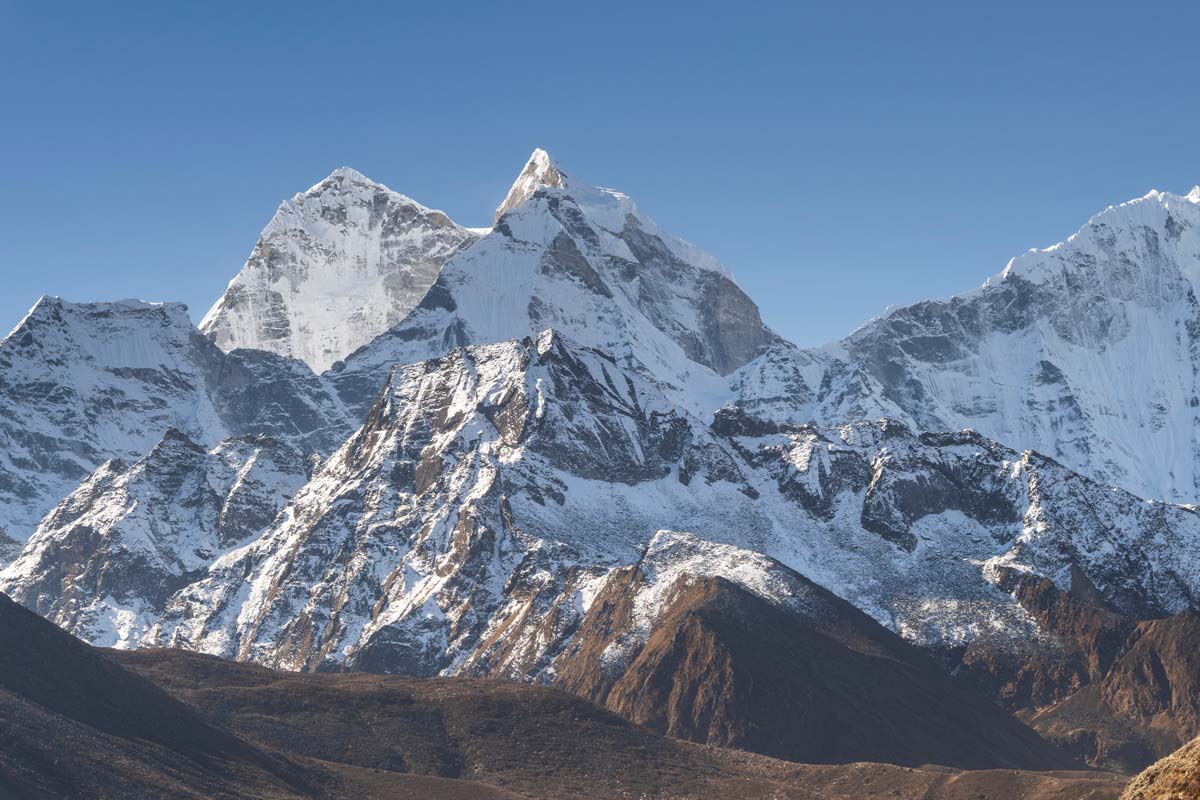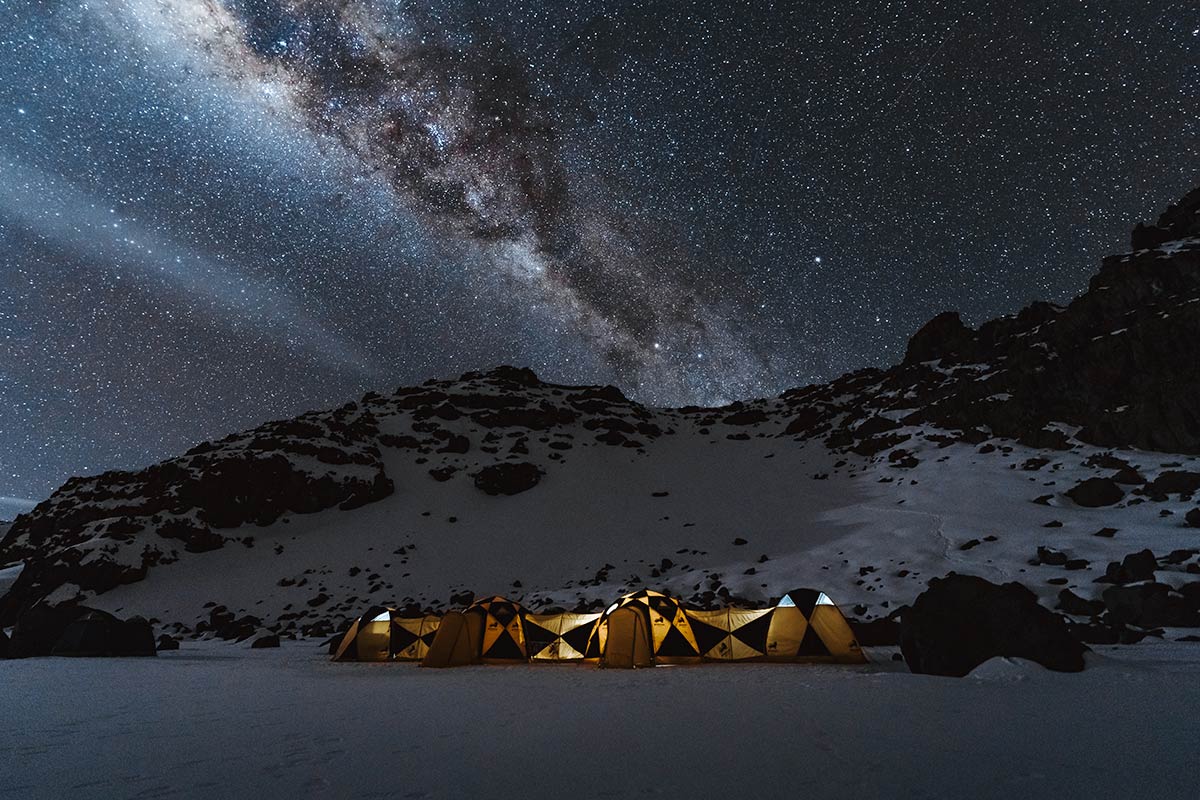ndian mountaineer Balwant Sandhu died recently in a road accident. Sandhu climbed and trekked for over 50 yrs in most ranges of the Himalayas. He was principal of Nehru Institute of Mountaineering Uttarkashi for Five years (1980-85). He was president of the Himalayan Club [1983-84) and Vice President of the Indian Mountaineering Foundation (197-98). He was a life member of the Central Himalayan Environment Association, the Himalayan Club, and the Indian Mountaineering Foundation. In 2001 he was elected an honorary member of the Alpine Club, United Kingdom. In the following article, British mountaineer Doug Scott pays tribute to Balwant Sandhu:
Balwant Sandhu was not as one would imagine a Sikh Colonel in the Indian Army to be. On the Indo-British Changabang Expedition of 1974 most of his resting time was spent reading Arthur Miller or chatting away, in his deep baritone voice, interspersed with infectious chuckles of laughter, on every subject under the sun with the odd line or two from Browning or W B Yeats thrown in for good measure.
Balwant was the co-leader, along with Chris Bonington, although it was Balwant who had overseen the organisation of the expedition right up to base camp. He had tremendous respect from the Army members of the Indian contingent who helped progress the expedition, as far as the British knew, with very little fuss or bother. Subsequently, Balwant, Chris, Martin Boysen, Dougal Haston, Sherpa Tashi and myself all made the first ascent of Changabang (6864 m). We all came back with mutual respect for each other enhanced and looked forward to further climbs together, especially with Balwant.
Santokh Singh Sandhu, a Sikh farmer living near Lahore, in what is now Pakistan, had five sons and the eldest was Balwant Singh Sandhu born 1 October 1934. Since the Sikhs are traditionally warriors it was not unusual for at least one member of the family to enter the Army. In 1957 Balwant was commissioned into the Mahar Machine Gun Regiment. Five years later he volunteered for the Parachute Regiment. He later taught at the Army College of Combat for three years and then went on to command the Sixth Parachute Battalion with distinction from 1971 to 1976. In 1980 he became Principal of the Nehru Institute of Mountaineering at Uttarkashi for five years. By this time Balwant had become one of the most experienced Indian mountaineers, a fact recognised by his peers who invited him to become Honorary Member of the Alpine Club. He was later elected on to the Governing Council of the Indian Mountaineering Foundation for six years. He was also an Honorary Secretary of the Central Himalayan Environment Association and represented India on the UIAA for four years. He was also president of the Himalayan Club from 1983-1985.
In 1981 he was given the Arjuna award for excellence in mountaineering as a result of a lifetime of walking and climbing in usually remote and little known regions of the Himalaya. There is only space to mention the highlights of his climbing career, the first being the first ascent of the North Peak of Bancha Dhura solo (ca 6,000 m) in 1962. Other first ascents included Shinkun (6065 m in Lahaul, 1968), Changabang (6864 m, 1974), Phawarar ang (6349 m, 1979), Mamostong Kangri (7516 m) in the East Karakoram (1984), Kabru Dome (6600 m) via a new route (1985), West Face of Kamet (7756 m, 1985), Chombu East Peak NE Sikkim (5745 m, 1996). In 2001 Rudugaira (5816 m) and in 2002 Jogin III (6116 m)were climbed during Doon School Expeditions to the Gaarhwal Himalaya.
This list represents only part of his lifetime love of climbing. He could not, however, as he said, put himself “through so much torture as to go to Everest” but he did help others to go through organising various training camps for young Indian climbers. He also took part in a variety of expeditions as leader or co-leader with foreign climbers, schools, colleges, the IMF and with his beloved “Paras”.
In 1973 he led the Indo-British Expedition that put Chris Bonington and Nick Escourt on the summit of Brammah (6416 m) in the Kishtwar. In 1975 he was deputy leader of an Indo-French Nanda Devi Traverse expedition. Balwant with French climbers and also with his great Indian friends Prem Chand and Dorje Lhatoo climber the main peak. The expedition also climber Nanda Devi East (7434 m) but bad weather prevented the expedition achieving its main objective which was to link the two summits by a high level traverse. Balwant broke a leg making the descent something of an epic but then not for the first time. He had injured himself on several occasions previously from rock fall in 1961 and again in 1964 surviving a 1000 m avalanche but breaking a leg. Later on the Indo-New Zealand expedition to Rataban (6166 m) he was again injured by rock fall. There may be some truth in the saying “old soldiers never die”.
Balwant was physically as well as mentally, tough and one who could move easily and naturally through the mountains, acclimatising well and able to cope with all the usual frustrations without irritation. If ever a man lived his life to the full it was he. Apart from his love of mountaineering and Army life and the thrill of making over 150 parachute drops he enjoyed shooting, fishing, horse riding and riding his Bullet motorbike, usually at considerable speed, not always successfully but did survive several accidents.
My appreciation of Balwant increased with every meeting – after Changabang, on Shivling (6543 m) in 1981 then North East Sikkim with Suman Dubey and other English and American friends in 1966 and then on our attempt to reach Takpasiri on the Indo-Tibetan border with Greg Child and Akhil Sapru in 1999. Balwant had already agreed to reconnoitre the route through the jungles of Arunachal Pradesh the year before which was a considerable achievement at age 65 since he was alone but for the local Nishi people. Our expedition after an 18 day “rumble in the jungle” arrived below our mountain but unable to climb it – only Akhil was fit since I had torn a tendon in my knee, Greg had blood poisoning and Balwant was struck down with malaria. We retreated to recover but never had a chance to climb together again.
He stayed at my home in 2004 with his wife Helga, where I was able to reciprocate the whole-hearted hospitality laid on four years before at their home in the Shimla Hills of Himachal Pradesh. We did have plans to visit Arunachal Pradesh again and also Nepal but too late.
On 3 December Balwant Sandhu was struck by a speeding car near the Indian Mountaineering Foundation building in New Delhi. He was immediately taken to the Army Research and Referral Hospital in New Delhi where he failed to regain consciousness. On 10 December Balwant passed away leaving Helga and their son Cornelius (Muki) grieving at his bedside and for all of us who knew him everywhere to grieve for a courageous climber and loyal friend.
Doug Scott


